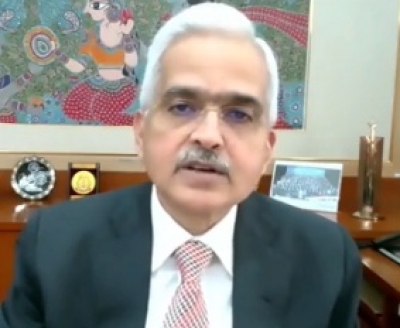The fundamentals of the Indian economy remain strong, as RBI Governor Shaktikanta Das recently stated. India’s growth rate is among the fastest in the world, retail inflation has moderated, buffer food stocks are abundant, forex reserves are substantial, and the current account deficit is expected to remain “well within sustainable levels.”
Domestic consumption is making a strong comeback, traditionally one of the main drivers of India’s economic growth. This is great news for businesses of all sizes. Simply put, when consumers spend more, businesses have more capital to invest in, and increased liquidity throughout the system energises complementary sectors and higher-end goods and services.
But what is the significance of this surge in domestic consumption?
One, as the festive season approaches, these numbers are likely to rise even more. Between August and November, when sales of everything from two-wheelers to real estate are at their peak, Indian consumers tend to spend more. Given how quickly consumption has recovered, the figures for the next three quarters will likely be even better.
Two, for better or worse, demand continues to drive India’s growth story. In a typical fiscal year, private expenditure accounts for approximately 55 per cent of the total national GDP. Furthermore, it has a significant impact on the next major growth driver, Gross Fixed Capital Formation (GFCF), which accounts for the money invested by businesses. As a result, strong domestic consumption translates unintentionally into strong economic growth.
Three, rising household consumption will boost demand for goods and services across industries, especially those involving significant amounts of “discretionary” or luxury spending. Product segments influenced by “premiumisation” trends are included in the latter. These include everything from chocolates and alcoholic beverages to laptops and headphones, as well as clothing and cosmetics. In some categories, such as automobiles, demand for premium products has outpaced demand for entry-level variants. In FY22, for example, premium car sales increased 38 per cent year on year, while lower-priced car sales increased only 7 per cent.
Why is luxury spending increasing in India?
Rising consumer incomes and purchasing power are aiding it: average per capita income has already surpassed USD 2,000 and is expected to exceed USD 12,000 by 2047. Furthermore, the rapid growth of the e-commerce sector and digital transactions has increased customer access to the luxury market. Furthermore, as consumers have become more value- and customisation-oriented, previously dominated by HNWIs, premium segments are rapidly diversifying to include Millennials and non-metro consumers. The typical cohort of HNI and NRI customers has also expanded to include affluent middle-class consumers in some segments, most notably luxury housing, due to the proliferation of remote and hybrid working models.
Furthermore, the premium product space is still in its early stages and remains largely untapped. As a result, market participants have numerous opportunities. For example, while the Indian smartphone market fell by 1 per cent year on year in H1CY22, the premium segment increased by 83 per cent. This segment, however, accounts for only 6 per cent of the total smartphone market.
As domestic consumption continues to rise, premiumisation trends will be boosted across other sectors, from quick-service restaurants (QSRs) and home products to hospitality and healthcare. This has happened before. According to Jun Nie and Andrew Palmer’s paper “Consumer Spending in China: The Past and the Future,” the threefold increase in household spending in China between 2000 and 2015 was accompanied by a sevenfold increase in spending on transportation and communication services.
So, where can investors find investment opportunities?
Discretionary consumption and premiumisation will account for a disproportionate share of growth.
Hospitality and tourism players will benefit from increased air travel, increased demand for top-tier hotels and resorts.
The automotive industry’s clientele for premium car models will become more diverse, especially as the EV revolution gains traction.
The prospects for the entertainment sector are just as promising, with people willing to pay for subscription packages and remain loyal customers even in tier-2 and tier-3 cities as long as there is content worth the money.
Companies in real estate, home-related products, and the FMCG personal care space will also benefit greatly.
The key takeaway is that Indian consumer markets will continue to be a key focus area for global public and private equity investors. Existing and new companies will generate hundreds of billions of dollars in market capitalisation.
To summarise, domestic demand will likely continue to drive India’s economic growth story, which will be increasingly influenced by the discretionary spending of a growing cohort of “premium” consumers. This trend presents an important opportunity for investors to get a head start on a veritable 21st-century gold rush.
–IANS


Comments are closed.